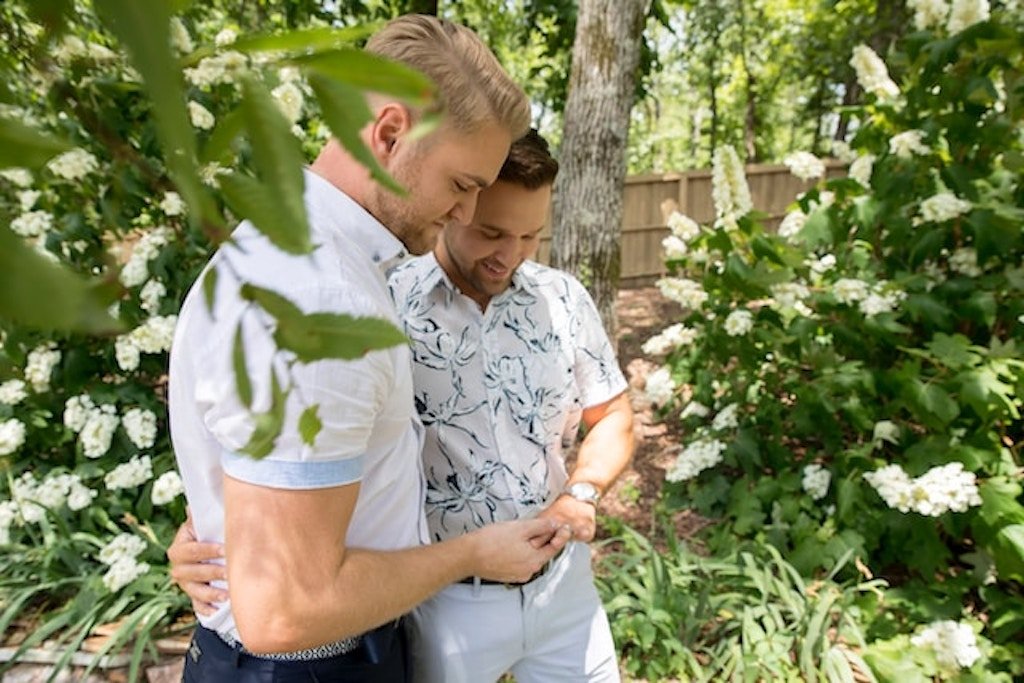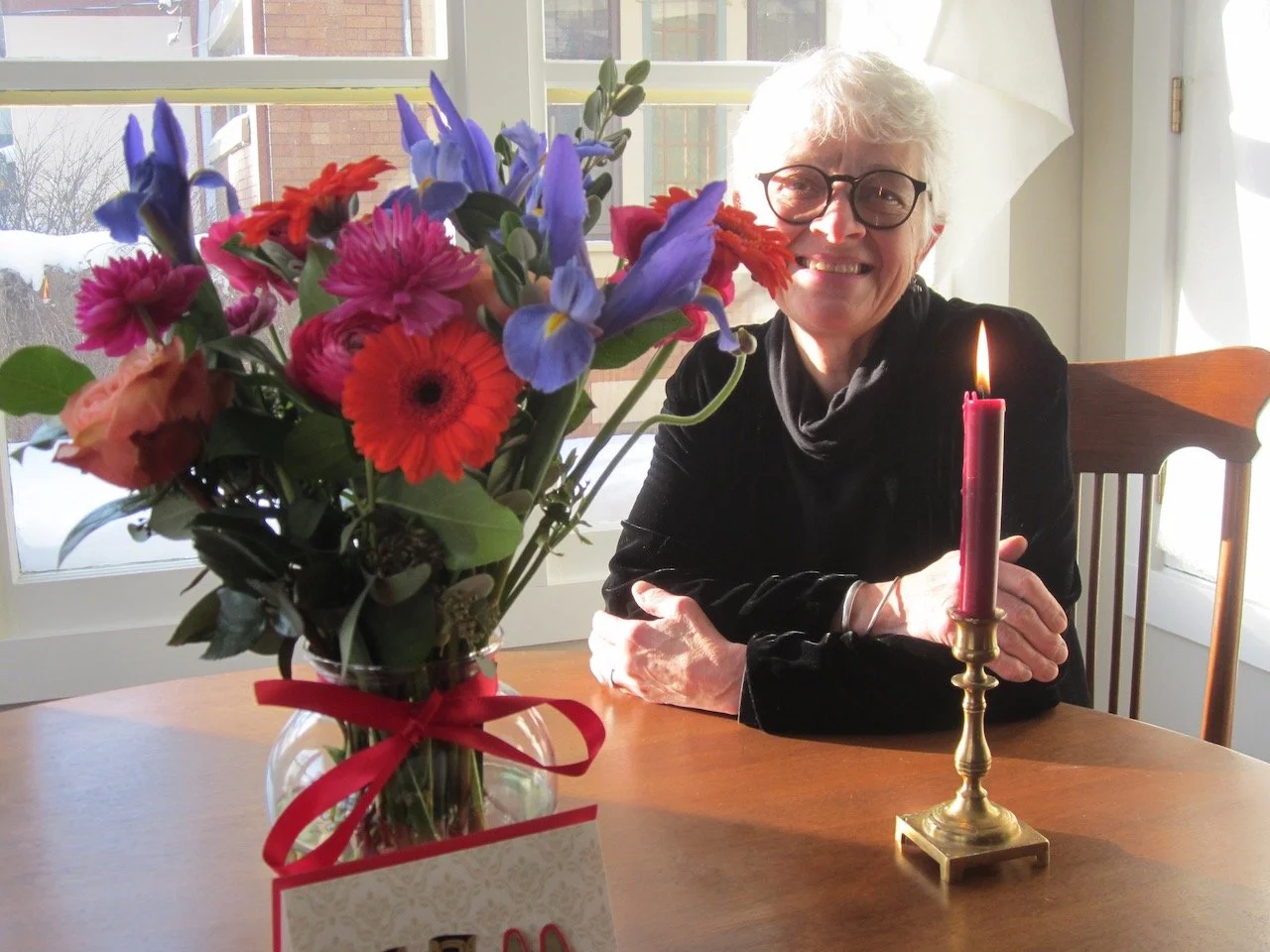Marriage
Today Joyce and I are celebrating our forty-seventh wedding anniversary. We were married in Toronto at a small Anglican church on a wintery Saturday morning. Snow began to fall midway through the ceremony—we could see white flakes gently drifting outside the altar windows. By Sunday, the snow had turned into a full-fledged storm, a harbinger of catastrophic blizzards that hit much of Canada and the eastern United States later that month. By Monday, Toronto was so snow laden that we barely made it to the airport for a honeymoon flight to California. A January wedding in the Great White North: What were we thinking!?
Gratitude and Hospitality
Lambert Zuidervaart and Joyce Recker at their wedding, January 8, 1977
Our wedding date was not the only anomaly. Joyce and I shared strong countercultural intuitions about what marriage means. We wrote our own vows and scripted the entire ceremony. To help create a communal atmosphere, we rearranged the pews into the shape of a “U.” To avoid any hint of ownership, we did not buy or exchange wedding rings; we also kept our own surnames. Instead of exchanging rings, we wore peace pendants given to us by our friends Henk and Anita Hart. Mom Recker sewed Joyce’s beige dress and my brown suit, and Joyce created the lovely cloth banners that framed the wedding ceremony. We also designed and printed the invitations, in the same earth tones as our wedding garments: beige and brown.
Clearly, our wedding did not display glamour and success. We tried, instead, to express gratitude and hospitality. Now, when I see young people at local weddings dressed to the nines or hear about the enormous costs to “putting on” a wedding, I feel both old-fashioned and sad. Despite the advances of feminism, ecology, and cultural diversity since the 1970s, the vision Joyce and I shared when we became partners for life has little resonance in the current wedding culture of North America.
That makes me wonder what people think marriage actually is. And why do we think it's important enough that we celebrate weddings and anniversaries?
Marriage Map
Contemporary views about marriage are all over the map. Although many people still idealize the act of getting legally married—hence the intense pressures and elaborate preparations of wedding days—fewer and fewer regard marriage itself as worth the effort. Recent surveys by the Pew Research Center show that most American adults think having a good job (71%) and having close friends (61%) are crucial for a fulfilling life. Significantly fewer, only 23%, say the same thing about being married. Moreover, 40% of those surveyed said they are pessimistic about the future of marriage and the family.
These views emerge from a richly diverse society where, over the past half century, the percentage of married adults has declined; the average age when people marry has increased; legally unmarried cohabitation has become more frequent; and new forms of marriage, including domestic partnerships, legally recognized same-sex marriages, and open marriages, have become more common. At the same time, a widening gap has emerged between feminists and queer theorists who consider marriage as such to be inherently oppressive and religious traditionalists who regard it as a divinely instituted relationship between one man and one woman.
A Fool’s Errand?
To trot out philosophical reflections on marriage in such a fraught environment might be a fool’s errand. Nevertheless, I’m no angel, and this is where I dare to tread. Because Joyce and I have been happily married for 47 years, let me openly acknowledge the limits to my own experience. I have not personally faced the suffering that makes others pessimistic or dismissive toward marriage.
Photo by In Lieu & In View Photography on Unsplash
The first challenge is to say what can count as a marriage. If we define it too narrowly, we’ll both ignore the immense historical variety in marriage forms and do an injustice to the diversity in how people experience marriage today. If we don’t specify what can count as a marriage, however, we’ll lose sight of the distinctive gifts and responsibilities this social institution offers.
Let’s begin with friendship and family, the institutions to which marriage is most closely tied. Like what I’ve described as a genuine friendship, marriage thrives on mutual care. But partners to a marriage are not simply good friends. So too, married partners often have children together, whether by birth or by adoption. Yet, despite the old religious view that procreation is the primary purpose of marriage, they do not need to have children, and their relationship is quite different from that between parents and their children. Like marriage and friendship, marriage and family are distinct social institutions.
Partners for Life
“The Jewish Bride” (ca 1665-1669), oil painting by Rembrandt , Public domain, via Wikimedia Commons
In my view, marriage is a relationship of loving care where, in mutual affection that has roots in sexual intimacy, the partners pledge and pursue a lifelong commitment to each other’s wellbeing. To be married is both to be and to be recognized as someone’s loving partner for life. And, as the increased visibility of domestic partnerships and same-sex relations makes clear, to be married in this sense is not the same thing as being legally married—a topic I’ll return to in a separate post.
Seen from one angle, then, marriage is a simple and enduring partnership. From another angle, however, it is endlessly complex and hard to sustain. Consequently, there are many ways marriages can go wrong. The marriage partners might find they lack mutual affection or struggle over power and control. They could discover or develop problems with sexual intimacy. They may grow doubts about the pledges they have made. They might be or become unable to keep long-term commitments. They could show ignorance, inattention, or disrespect toward each other’s wellbeing. It’s amazing, when you think about it, that so many marriages turn out well.
Yet good marriages cannot occur in a societal vacuum. They depend on the right sorts of economic conditions, legal structures, and religious or spiritual encouragement. If, as I’ve argued in a blog post on digital capitalism, the current economy creates a hostile environment for friendship, for example, the same is probably so for marriage. I’ll also return to this topic in a later post.
Fulfillment
Let me conclude with brief comments about why marriage is important. Adult companionship and sexual intimacy are strong human needs; truly satisfying them requires more than either genuine friendship or occasional coupling can provide. It requires the sort of relationship that marriage offers. To enter a marriage is not the same as having “friends with benefits.”
So too, once we’ve left the familial home, all of us want to rely on someone who equally relies on us, through thick and thin. As traditional Protestant wedding ceremonies put it, we want to have and to hold an intimate partner “for better, for worse, for richer, for poorer, in sickness and in health, to love and to cherish, till death do us part.”
Joyce on our 45th wedding anniversary, January 8, 2022
That, I submit, is a deeply human aspiration best pursued in marriage, despite how patriarchy, sexism, and homophobia have distorted its fulfillment. Joyce and I had a glimpse of this on January 8, 1977 as the snow drifted down. We did not know then what our future would hold. But I’m so thankful we embraced it together. I’m grateful we became and remain loving partners for life.




